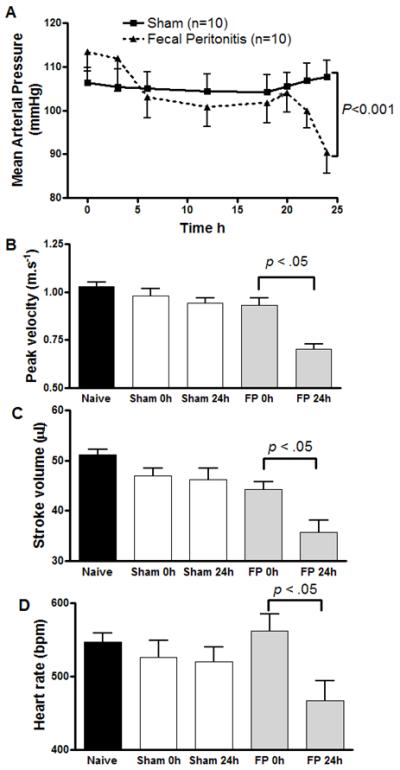Fig. 1. Hemodynamic measurements of (A) continuous blood pressure monitoring and intermittent echocardiography ((B) peak velocity, (C) stroke volume and (D) heart rate) in a fluid resuscitated conscious mouse model of fecal peritonitis (FP).

Echocardiography values displayed for naive (untethered) mice; pre FP/sham at time 0 h - (i.e. after 24 h on tether) and 24 h post FP/ sham. Fecal peritonitis (FP) induced a fall in mean arterial pressure (MAP) over 24h in contrast to sham mice (P < 0.001). In addition, at this timepoint FP induced a significant fall in aortic peak flow velocity, stroke volume and heart rate compared to shams (P < 0.05). Data are shown as mean ± sem with P values as shown (one way ANOVA or paired t-test for heart rate; n=10 for MAP and for echocardiography measurements n=13 fecal peritonitis, n=15 sham and n=15 naive mice).
